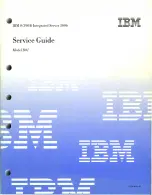
NOTE
Unless otherwise stated, the preceding operations can be performed on either the primary or the secondary
end. If you want to perform the operations on the secondary end, perform primary/secondary switchover first.
3.2 Preparing for the Configuration
To successfully configure the remote replication feature, you must make preparations in
advance, for example, obtaining the remote replication license, setting device information,
and selecting host ports for data transmission.
Activating the License
Before configuring remote replication, import and activate its license file to enable the remote
replication function to take effect.
l
If you do not have its license, contact technical support to purchase the license.
l
If you have purchased its license, follow instructions in
Managing License File
of the
Online Help to import the license file to the primary storage system and secondary
storage system respectively and activate them.
Setting Device Information
To distinguish between primary and secondary storage devices, you need to set the device
information, including device names and locations, before configuring the remote replication
feature. Log in to DeviceManager and choose
Settings
>
Basic Information
>
Device Information
to set device information.
Selecting Host Ports
Remote replication supports data transmission based on FC host ports or iSCSI host ports.
l
Fibre Channel port
Fibre Channel ports feature high transmission rate and low transmission latency.
However, Fibre Channel ports use multi-mode optical fibers as transmission media.
Multi-mode optical fibers support only a short transmission distance. Therefore, remote
replication that uses Fibre Channel ports is suitable for short-distance backup and DR.
l
iSCSI host port
Typically, iSCSI host ports are inferior to Fibre Channel ports in terms of transmission
rate and latency. However, iSCSI host ports carry data by using the IP protocol.
Therefore, data can be backed up to the secondary storage system through the Internet or
dedicated cables, achieving remote backup and DR across cities, provinces, and even
countries.
Understanding the advantages and disadvantages of data transmission based on Fibre Channel
ports and those of data transmission based on iSCSI host ports helps you select host ports that
best meet service needs. After you select a host port type, the corresponding link type is also
selected by default. In an actual networking scenario, you must also consider factors such as
the bandwidth, latency, network quality, and security to ensure link efficiency and stability.
OceanStor V3 Series
Remote Replication Feature Guide for Block
3 Configuring Remote Replication
Issue 06 (2018-01-30)
Huawei Proprietary and Confidential
Copyright © Huawei Technologies Co., Ltd.
33
















































